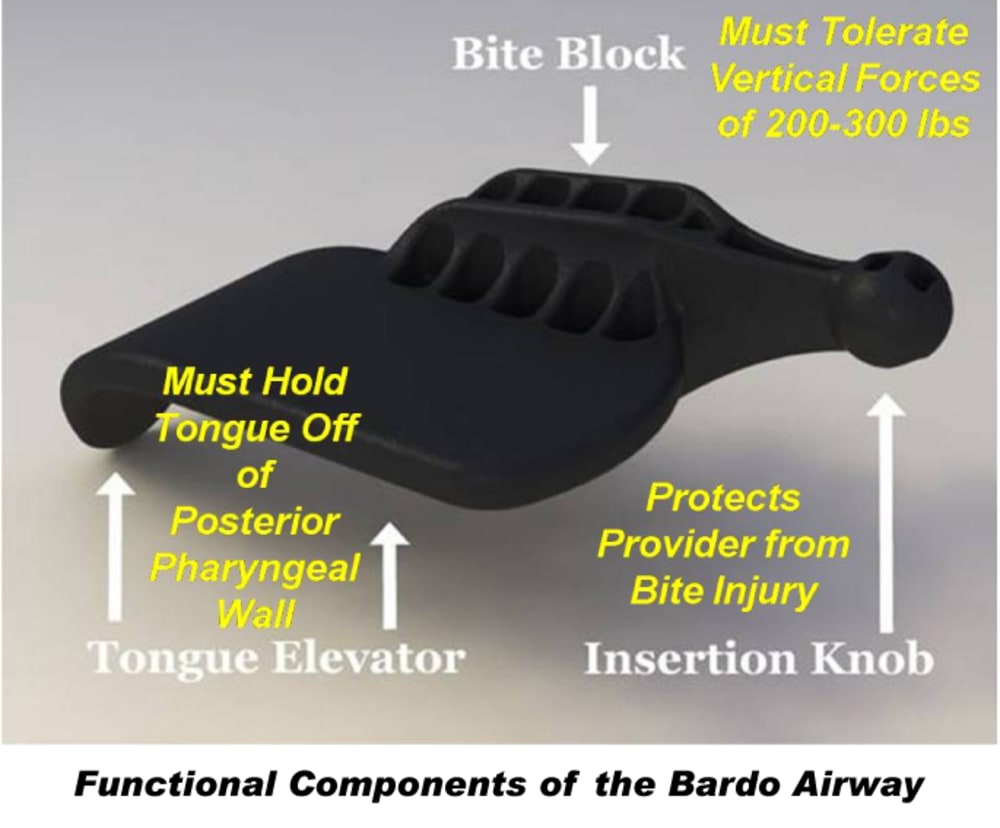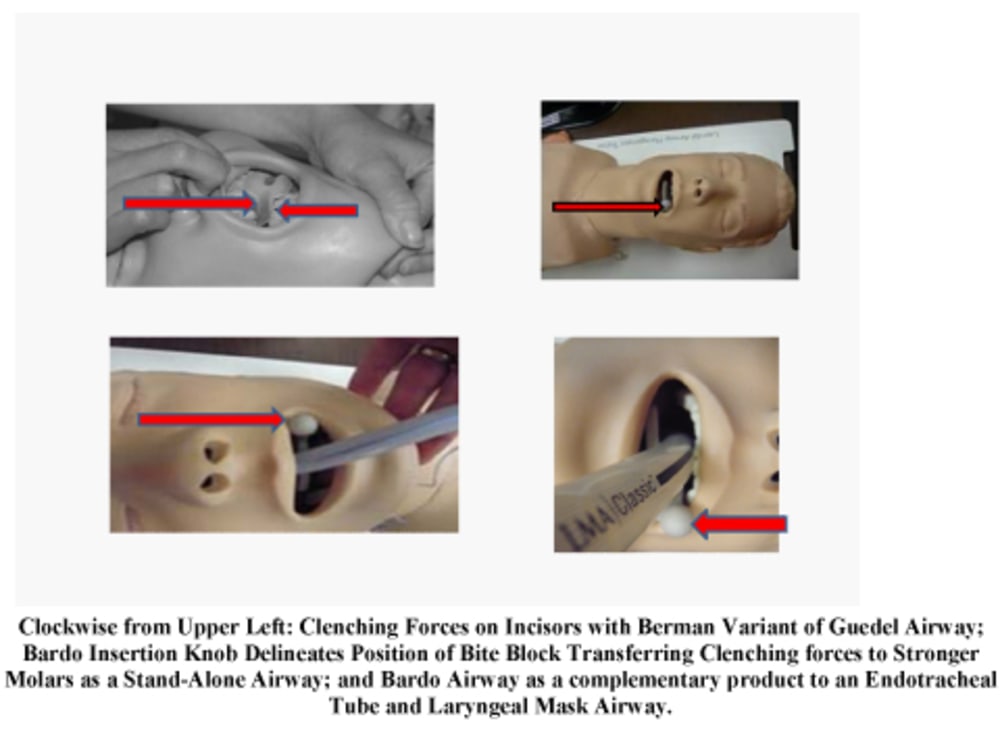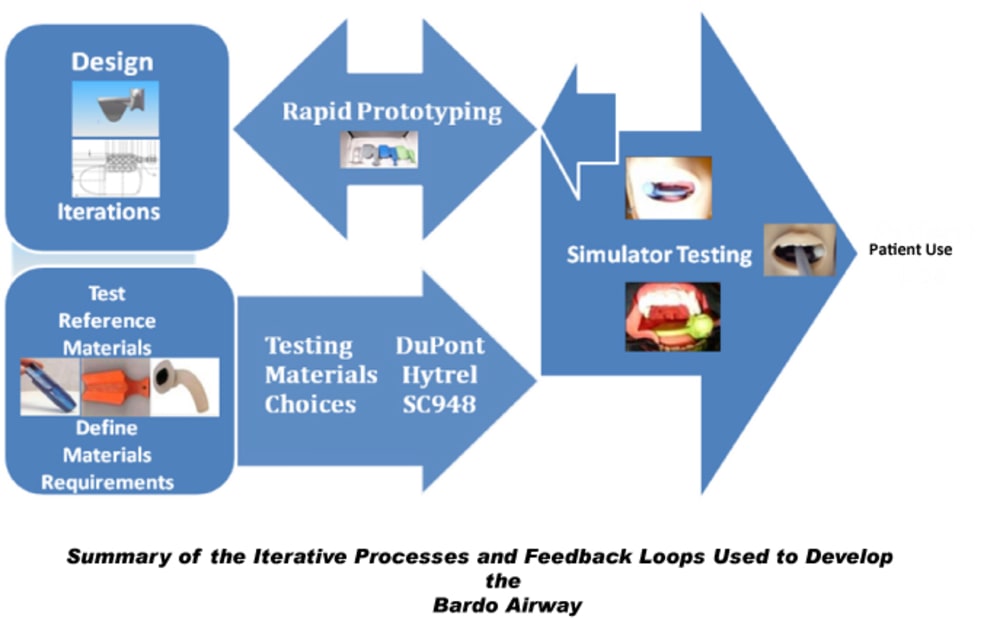The Bardo Airway (Patent Pending) is a revolutionary oropharyngeal airway that establishes and maintains an open airway and also prevents dental and soft tissue damage.
The Problem:
•Dental injury is the most common medicolegal complaint against anesthesia, accounting for greater than 33% of all complaints.
•The only prospective study of oral injuries during anesthesia and surgery showed an oral injury incidence of 18%. The Bardo Airway can therefore potentially impact over 3 million patients per year in the USA alone.
•Placement of an airway device, i.e. Oropharyngeal Airway, Laryngeal Mask Airway (LMA), Endotracheal Tube) transfers jaw clenching forces forward to two or more incisors.
•Loss of access to the obstructed airway during emergence clenching can be life-threatening.
•Removal of airways, endotracheal tubes, and LMAs when the teeth are clenched during emergence can lead to partial dislocation, fracture and tooth avulsion.
The Solution: The Bardo Airway
No other device on the market can do all of the following:
•Shift clenching forces from weaker incisor teeth to stronger molars
•Elevate the tongue from the posterior pharynx to maintain an open airway
•Be used with Bag-Valve-Mask Ventilation
•Function as an aid to fiberoptic intubation
As a point of reference, dental damage, approximately 50% of which is caused by patients reflexly clenching down on oral airway devices, is the most common cause of malpractice litigation in Anesthesiology in the private sector.
The fundamental oropharyngeal airway and its progeny as designed by Guedel in 1933 have not seen a fundamental design improvement since that time. Moreover, the Bardo Airway prevents obstruction of breathing by clenched teeth when it is used in concert with Laryngeal Mask Airways or endotracheal tubes.
Although known to clinicians for years, the first anesthesia literature description of Emergence Clenching Dental Trauma was in 1999. Healthy molars and premolars tolerate vertical forces of 100-200 lb. Anterior teeth tolerate vertical forces of 25-35 lb. and horizontal forces of
Like this entry?
-
About the Entrant
- Name:Theodore Burdumy
- Type of entry:teamTeam members:Ted Burdumy, MD,MBA, President, InfoHealthNetwork, Inc.
Keith Vorst, Ph.D, California Polytechnic State University, San Luis Obispo, Industrial Technology Plastics and Packaging Program 03-433
Bruce Robertson, Ph.D, California Polytechnic State University, San Luis Obispo, Industrial Technology Plastics and Packaging Program,03-433
- Hardware used for this entry:Rapid Prototyping:Dimension SST (Stratasys Inc.; Minneapolis, MN)Software used for this entry:Design:Solidworks 2007-2008 (Dassault Systems ,Lowell, MA);FEA:Cosmos 2007-2008 (Dassault Systems Lowell, MA);Rapid Prototyping:Catalyst Rapid Prototyping Software V 3.4.1 (Stratasys Inc.;Minneapolis, MN)
- Patent status:pending








